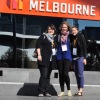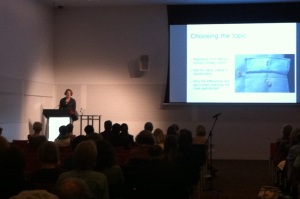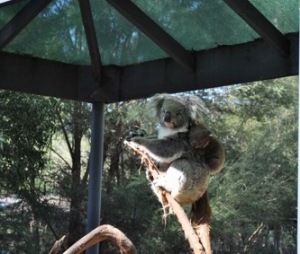
by Sarah Benson, CTC Graduate, 2013.
In Spring 2013 when I was beginning work on my master’s dissertation (which evaluated synthetic and natural threads used in textile conservation), I felt very strongly that the dissemination of our work should be to as wide an audience as possible, contributing to the growth of conservation. I fully admit I wasn’t exactly prepared for what I was getting myself into. I submitted an abstract of my dissertation to the triennial ICOM-CC in the spring of 2013. In late summer I received a message saying my abstract had made the first cut. Around 25 abstracts had been submitted and only 8 would be chosen for the final preprints and asked to present at the conference. Meanwhile I was still in a state of panic, finishing my dissertation and knowing that once it was turned in it would not be the end of it. While working for a private conservator in Scotland, I began the seemingly impossible task of turning a 20,000 (or so) word dissertation into a paper not exceeding 3,500 words inclusive of everything. No pressure! Fortunately I had a fantastic support group from my supervisor Frances Lennard and co-author Margaret Smith who helped significantly in recreating the project in a conference style publication. I am certain I would not have been very successful without their knowledge, experience and support behind me.

To quickly sum up, after the paper submission in November it was reviewed and came back to me in time to make some amendments over Christmas. In April we were informed which papers had made the selection and with slightly mixed feelings of delight and dread I found out my paper had been selected. After the editors’ final edit in July 2014, I started writing and preparing the presentation, a maximum of 20 minutes and inclusive of other information not available in the paper, as everyone attending the conference would have access to the preprints. Again, the project needed to take on another light and be able to engage and captivate a live audience….I really wished I had taken more high quality images a year earlier! I was fortunate at my new job in Singapore to do a test run in front of some of the other conservators and get feedback from colleagues who were new to the project. This is truly invaluable as the author and co-authors are so close to the work that we don’t know what is completely clear and what is not. Some of the most useful comments came from non-textile conservators on terminology that seems almost second nature to us. I was also very lucky to receive a Tru Vue/ Icon CPD Bursary to attend the conference which made the costs a bit more manageable. Finally, as prepared as I could hope to be, I went to Melbourne to present and attend the conference. I was extremely lucky in getting the first day to present so I could relax and enjoy the rest of the week, and hopefully most in the audience were still excited and awake early in the week.
The whole conference was a bit of a whirlwind and was such an eye opening experience. Although I really struggled many times and could have won awards for procrastination, I am very glad I went through the process, survived, and had the opportunity to present at such a large conservation conference. I still do feel strongly about the dissemination of our work, especially dissertations, as this type of research is really a luxury in the working world. Although it seemed a very painful process at times, the contacts, recognition, and overall experience of presenting at a large conservation conference has been truly invaluable.


